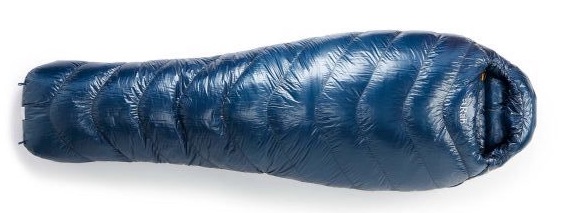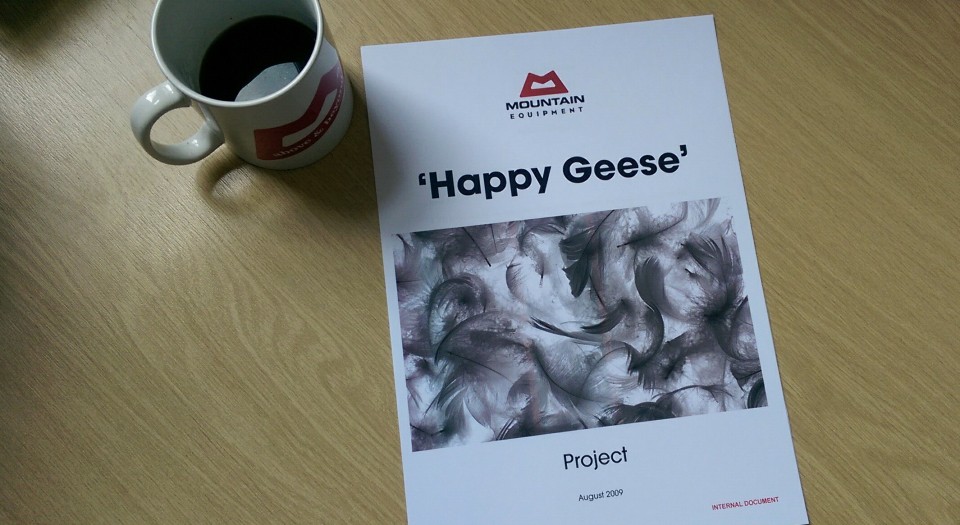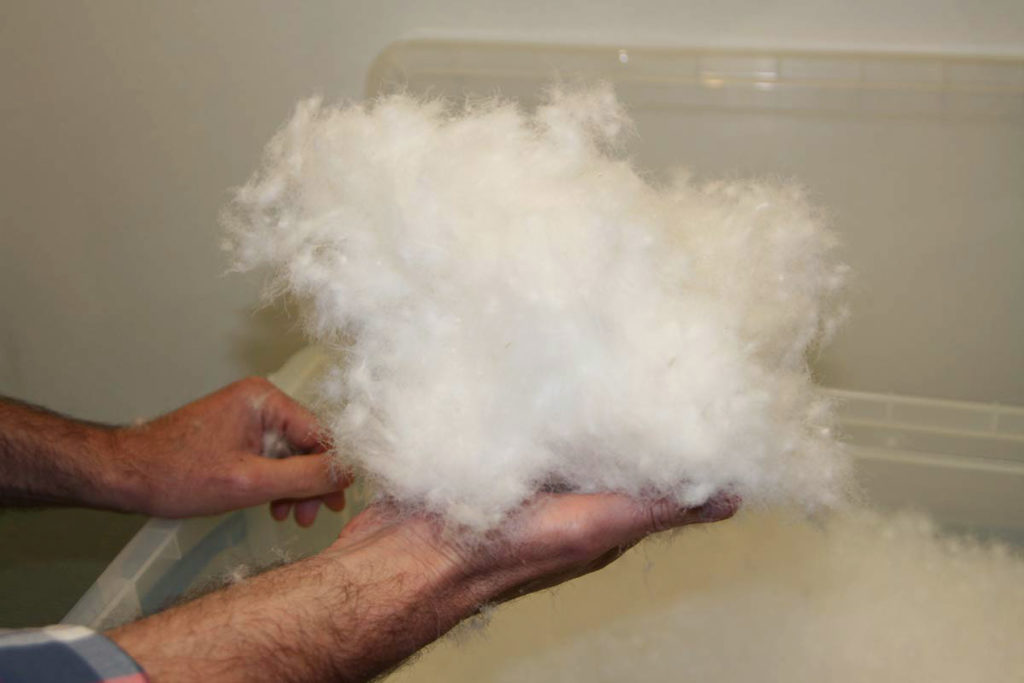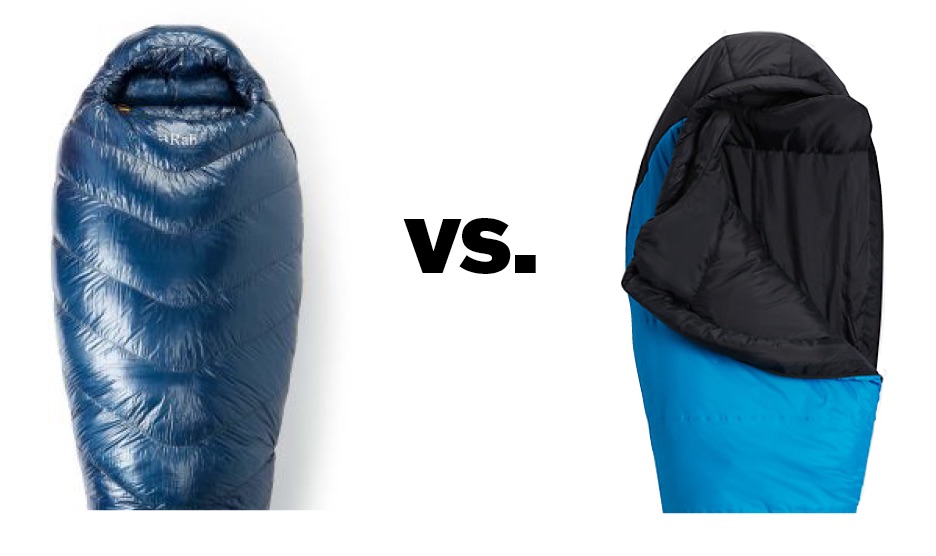If you’re in the market for a new sleeping bag, there’s one obvious big question: do you opt for natural down filling or a synthetic alternative.
In the past, the simple answer was that down was lighter, smaller packing and warmer, for its weight, but expensive and less tolerant of damp conditions. Meanwhile, synthetics were heavier and bulkier, but more resistant to water, easier to clean and cheaper. Have things changed? Are modern synthetic bags as good as down? Does water-resistant down change the equation and what else do you need to know to decide?

Rab Mythic 400
Down is still lighter for its warmth
If your absolute priority is warmth to weight ratio, a high quality down sleeping bag is still the way to go, though the best modern synthetic bags can now rival mid-range down for performance. For perspective, Mountain Hardwear’s HyperLamina Spark is arguably one of the best synthetic bags out there and has a decent warmth-to-weight ratio for a synthetic bag. It weighs around 740g and has a Comfort Limit rating of 0˚C. To put that in perspective, a Rab Mythic 400, the brand’s pinnacle lightweight down bag, weighs just 660g and has a Comfort Limit of -7˚C. To be fair it costs more than twice as much as the Mountain Hardwear bag. Perhaps more reasonably, if you compare the Mountain Hardwear bag to a mid-range bag like Mountain Equipment’s Glacier 300 offering a similar -1˚C comfort limit, the synthetic bag is actually slightly lighter – 740g v 815g – but offers similar performance on paper. Bear in mind though, most synthetic bags won’t perform as well relative to weight.
Gearhead says: Down still rules if you want the absolute best in warmth-to-weight ratio, but you will pay for it. That Rab bag, for example, retails for a cool £430. In the middle range, the best synthetics are now closer to down than ever before.

Mountain Hardwear HyperLamina Spark
What works best in damp conditions?
Just like with clothing, synthetic fills are still the undisputed bosses when i comes to camping in damp conditions, particularly bivvying in the UK. They simply retain more loft and warmth when wet and, importantly, recover their loft completely once dry. New water-resistant or hydrophobic down has upped the ante though. It’s still not as effective as a synthetic if it gets well and truly wet, but will dry faster and more effectively than untreated down. It’s a good insurance policy and also helps bags maintain performance on extended, cold conditions expeditions where bags never get the chance to properly dry out. Finally, even untreated down is more resilient than you might think, particularly in large quantities and will cope just fine with most tent-based camping.
Gearhead says: For bivvying where getting your bag damp is almost inevitable in time, synthetic fills are still the best choice, but for tent-based camping, down works brilliantly. Water-resistant down adds a sort of insurance policy, but still isn’t quite as resilient as synthetics.
What about fabrics?
Another way of upping water resistance is to use a coated fabric that’s either waterproof or near waterproof. The upsides to this are that you get more protection for your fill. The downsides are that you add some weight and bulk to your bag. Less obviously though, the slightly heavier fabric may restrict the ability of the fill to loft and make for reduced warmth. Finally, water-resistant outer shells mean that the fill dries out more slowly after use. Ideally you want to turn the bag inside out and air it before packing it away in the morning. Normal fabrics should be breathable enough for this not to be an issue.
Gearhead says: A water-resistant outer fabric adds some welcome protection in damp conditions, but adds weight and bulk to the bag.
Ease of maintenance
Synthetics have always scored a win on, erm, knock-about robustness. If a synthetic gets grubby or smelly, you just throw it in the wash and hang it out to dry. Simple stuff. By contrast down is harder to maintain. It’s not so much that it’s hard to wash a down bag in the first place – use a recommended soap / cleaner – but drying it is problematic and means the bag needs to be agitated to stop the down clumping together in a large tumble drier at a low temperature. Tennis balls are a popular solution. It’s a hassle, so it’s best to use a lightweight liner to keep the bag as clean as possible inside and generally take sensible care of your bag. Water-resistant down is easier and will retain around 80-90% of its original loft even when dried out without special techniques, but again it’s best to dry it with agitation to keep it working at its best.
Gearhead says: For ease of maintenance, synthetic scores an easy win.
Which is more durable?
Mostly sleeping bags have an easy life. They don’t tend to get dragged across abrasive rocks or walked over, mostly they get compressed, carried, decompressed, slept in and on, then compressed again. Down is fantastically resilient in long-term use. I still have a Mountain Equipment down-filled Lightline bag from the 1980s which is useable, even though the fabrics are a little tired and have stiffened up with age. Synthetics though tend to lose performance and loft as the fibres break down with repeated compression. In both cases, storing uncompressed in a larger bag – usually supplied these days, but a pillow-case is a good alternative.
Gearhead says: Down is a better long-term investment despite the higher initial cost. Properly looked after it can last for decades.
Can you be allergic to sleeping bags?
Apparently it is possible to be allergic to allergenic proteins in birds which can appear as down breaks down with use. That said, down is carefully cleaned and processed before use and the windproof / down-proof fabrics used should keep most of these particles in situ. The same should be true of dust mite allergens. If you have a genuine allergy to bird products though, a synthetic bag is a no-brainer. If you’re very sensitive to dust allergens, a regularly washed synthetic bag may help. Think about where you store your sleeping bag as well – under the bed may be convenient, but also a dust-trap.
Gearhead says: Synthetics the winner here, but as a dust allergy sufferer, I’ve never had a problem with a down bag.

Down Codex is a standard for ensuring the welfare of geese
Ethics: Is down cruel?
A lot of people have an understandable concern over the ethics of down production and, in particular, live plucking. The good news is that pretty much every major outdoors brand producing sleeping bags now has a policy of sourcing down as ethically as possible. That means down and feathers are a by-product of the food industry and taken from birds which are kept in good conditions and are dead when plucked. The reality is that it’s very hard to be 100% certain that your supply chain maintains its standards, but outdoor brands like Mountain Equipment with its dedicated Down Codex project – http://www.thedowncodex.co.uk – are at the forefront of producing audited, sustainable and traceable down. If you’re concerned about ethics, check out the site for more information.
Synthetic fills, on the other hand, may be cruelty free, but are essentially plastics and products of the petro-chemical industry. They are also, when laundered, a source of the micro-plastic particles which are an increasing threat to our ecology. Recycled fills – they are out there – are a greener alternative to virgin plastic ones. Finally, if it worries you, technical sleeping bag fabrics are almost exclusively synthetic regardless of fill, though low-performance, cotton-shelled bags do exist. As an aside, if you really want an all-natural bag, there is a US company, Lucky Sheep, producing cotton-shelled bags with wool insulation – https://www.woolsleepingbag.com
Silk liners, by the way, work extremely well and are natural.
Gearhead says: It’s almost impossible to be 100% certain, but outdoors brands are making huge efforts to use certified, ethically-sourced down. There are different standards at play, if you’re concerned, dig into the detail. Meanwhile synthetic fills come with their own set of ethical dilemmas.

Down in full lofting mode at PHD HQ
The big verdict
So should you buy down or synthetic? When it comes to ultimate warmth-to-weight ratios, and small pack size, down still has a major edge over any of the synthetic fills out there. High-end down and lightweight fabrics are expensive though, so expect to pay a lot for a premium, lightweight sleeping bag. You can offset that a little, by factoring in down’s advantage when it comes to longevity. It will almost certainly carry on working when your synthetic bag is a distant memory.
All that’s fine and good in a tent, but if you’re going to be bivvying or snow-holing, the knockabout resilience of synthetic bags scores big bonus points and the best of them are now broadly comparable with mid-range down alternatives. In short, if damp is going to be a regular issue we’d still go synthetic, even though water-resistant down treatments have improved things on that front. Synthetics also score for ease of cleaning and simplicity of use. Who cares if you spill soup down your synthetic bag, you can simply throw it in the washing machine once you’re home.
Finally, ethics is one to dig into yourself, but outdoor brands are at the forefront of ethical down sourcing, despite confusion over standards. And while synthetic fills avoid any initial cruelty issues, they lose marks for being plastic-based and, in the longer term, less durable, meaning they’ll need replacement before a down equivalent.
Which brings the final question: is down worth the premium you pay? Value’s a moving target and a relative one too, but in broad terms, we’d say yes. Even though cutting-edge synthetic insulated clothing is catching up with down, when it comes to sleeping bags, for all-round use, feathers from a reputable outdoor specialist brand still rule.






